Fishing Report: Sept. 17, 2021

Trout action remains steady inshore
You can find trout around those deeper flats and they are steadier even during the day. However, the dock lights at night are a great place to find them, but the full moon coming up does disrupt that pattern, giving them enough light to still feed actively through the night without congregating around the local dock lights of the area, says Captain Dylan Hubbard of Hubbard's Marina.
MADEIRA BEACH, Fla. - Every Friday morning, Captain Dylan Hubbard of Hubbard's Marina joins Good Day to fill viewers in on his fishing forecast as we head into the weekend.
Here is his fishing report for September 17, 2021.
Inshore
Red tide continues to be most prevalent along the coastline and around the intercostal, north of Tampa Bay. We are still seeing plenty of actively feeding fish even in the areas affected by red tide, but they seem to be most actively feeding where clearer, cleaner water shows up.
Look for that incoming tide which typically brings better water from the offshore area. Keep an eye on the forecasts and reports via this link if you are interested.

Mote Marine's new red tide mitigation machine
The OZONIX Mobile Water Treatment Unit, contained on a tractor-trailer, has been deployed previously for various types of wastewater treatment and is now being tested for Florida red tide mitigation.
READ: Mote tests machine that can remove red tide without harming marine life
Mangrove snapper are currently super thick around the area and we’re nearing that time of year when they start to move out of the bays and the bigger fish will leave the inshore waters for near shore habitat. Mangrove snapper spend nearly their entire juvenile lifecycle in the estuaries, mangroves and, ultimately, around seawalls, docks, bridges, rock piles and jetties of the bay and intercostal until they reach around 10-14 inches. Then, they move out near shore.
Typically, as waters cools this will trigger the push of mangroves along with lunar cycles. It’s a great time to capitalize on the plentiful, aggressive, and hungry mangrove snapper before their numbers thin out and they get less prolific than the summertime warmer weather.
On Friday morning, there were clouds of mangrove snapper around the docks of John’s Pass chasing the plentiful small fry baits that were crowding the dock lines. They made it tricky to get bait down past the snapper to reach the redfish and snook that were hugging the bottom. They love the smaller pieces of shrimp and lighter tackle, but if you’re patient, you can even get them on bigger whole shrimp too even when you don’t want to!
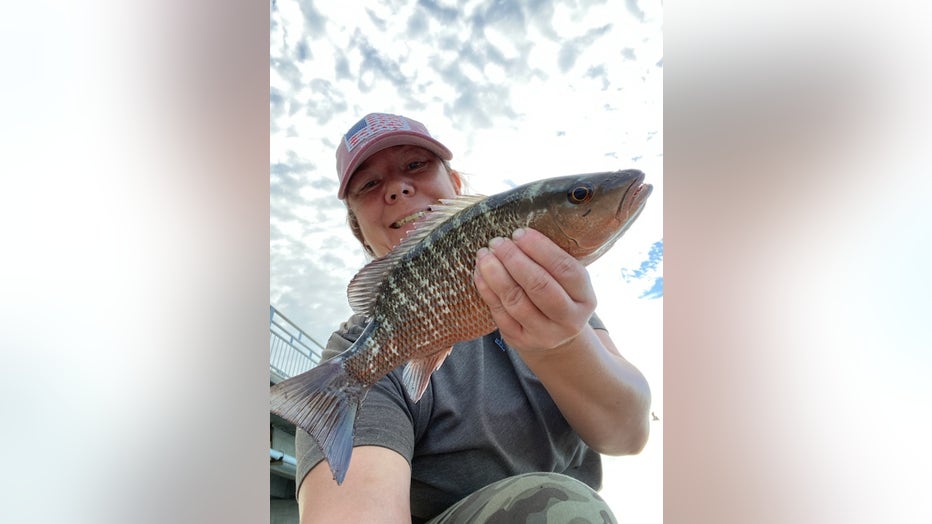
Mangrove snapper caught inshore (Credit: Hubbard's Marina)
Snook fishing has been good around the area lately, but you really got to time your trips around the tide and try to capitalize on that sunrise, sundown or nighttime action. During the heat of the day, they are much less active and much more leader-shy -- or just plain lazy.
We are having the most luck around the area using the soft plastic white paddle tails, imitation shrimp lures, or the early-morning or low light conditions. The surface lures work well too! However, live shrimp or white bait works too!
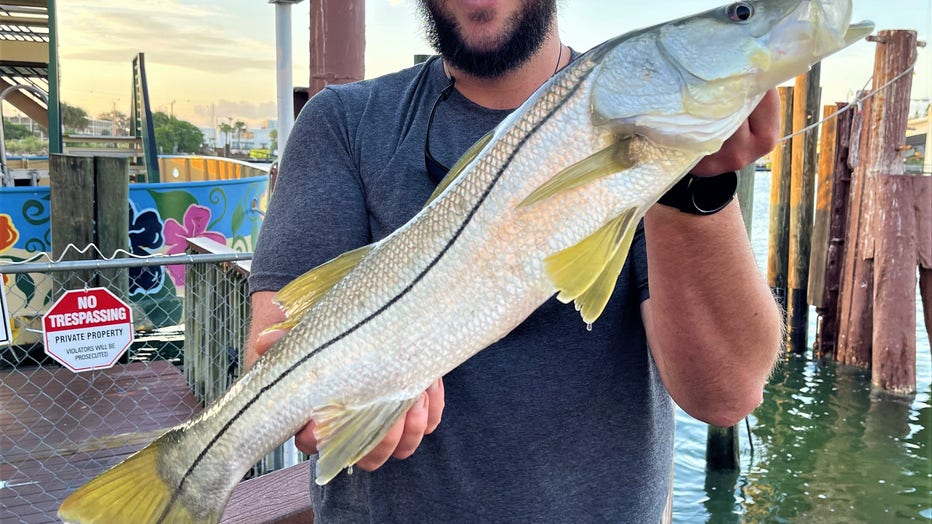
Snook caught inshore by Captain Dylan Hubbard (Credit: Hubbard's Marina)
Redfish action has been hot around the area and continues to be impressive around the flats, mangroves, oyster bars, beaches, and local passes. We see them most often overnight, early morning or in the late afternoon when waters are cooler. During the heat of the day you can get lucky on the cut bait or slower moving artificials, especially if you find areas of shade, cuts, pockets, or holes adjacent to structures holding bait. The plentiful white bait of the area has them feeding well, but crustaceans are always a redfish favorite, so shrimp or smaller crabs works well.
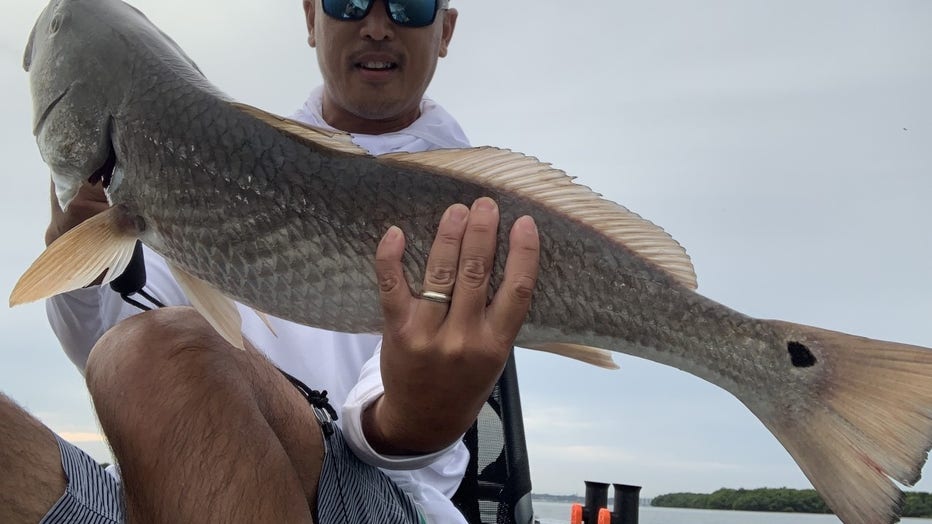
Redfish caught inshore (Credit: Hubbard's Marina)
Trout remain steady through the area on those deeper flats still and they are steadier even during the day. However, the dock lights at night are a great place to find them, but the full moon coming up does disrupt that pattern, giving them enough light to still feed actively through the night without congregating around the local dock lights of the area.
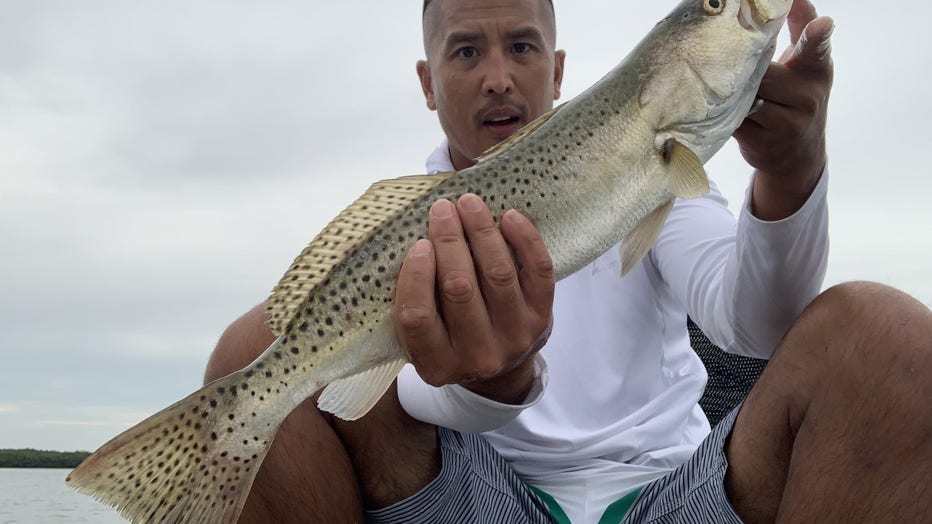
Trout caught inshore (Credit: Hubbard's Marina)
Pompano action is picking up around the local passes, on the beaches and around the bridges that feed the passes. We are seeing them most on the pompano jigs, but live shrimp or sand fleas work well as other options for the pompano too.
Triple tail are still around the area near local buoys, markers and floating debris around the bay, channels or along the beaches. It’s a great time to go look around while heading to or from the area you plan to fish most of your day. We are seeing these guys caught best in the bay around the markers, but you can find them hiding under virtually any small floating structures.
Near shore
Right now, we’re seeing the hogfish bite remain steady. It’s still, overall, very slow compared to the busier time when waters are chillier. However, we are seeing a few around 30-60 feet of water using lighter tackle and live shrimp. The knocker rig, jig head or nekid ball jigz method are still best when targeting these hogfish.
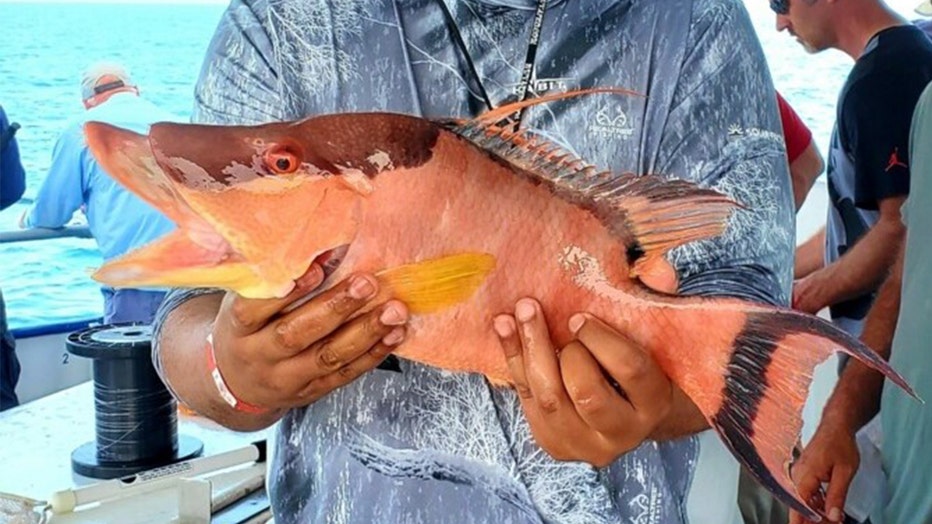
(Capt. Dylan Hubbard)
Lane snapper action remains hot near shore right now anywhere from 40-100 feet deep throughout the near shore waters. However, they become much more common, larger, and more aggressive as you get further from shore. We find them on squid, cut threadfin or even live shrimp using the hogfish methods which work for lanes, but the double snell rig for mangroves is an approach that works well for lane snapper too -- especially in deeper waters.
Mangrove snapper action has been decent near shore and should pick up as most of the mangroves move from inshore to near shore in the coming weeks. We see these guys follow nearly exactly the trends and rigs and technique laid out for lane snapper above, however, we don’t normally see them caught on squid. You can get some big mangrove snapper though using smaller pinfish for bait near shore.
Red grouper has closed but we are still catching some scamp grouper from time to time near shore. The big news lately has been the uptick in the black seabass near shore. Typically, we catch these guys here and there, but the last week we have seen quite a few nice ones caught. We hope to see that trend continue as they are incredibly good eating fish too!
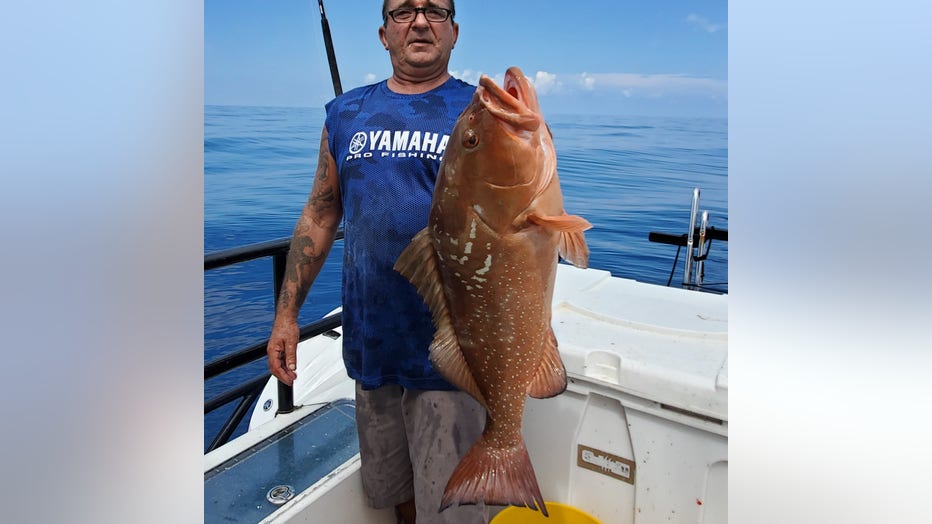
Red grouper (Credit: Hubbard's Marina)
We are seeing plentiful mackerel along the beaches and extending into the near shore waters, following big schools of bait. Plus, typically around that full moon late September into early October, we see those kingfish start showing up. This should be a great addition to our near shore fishery. We’re hoping to see them sometime in the coming week or two -- especially if we get a cold front to swoop down to the area, we should see our first kings show up shortly after.
Offshore
Amberjack are still open until the end of October, but we have seen a decline in the number of jacks we are seeing out there on the water. However, now that red grouper are closed, that will give us a shot to go hunt those jacks down even more. Plus, while fishing deeper for jacks, we are seeing big porgies, vermillions, yellowtail, scamp, mangroves, almacos, and others too!
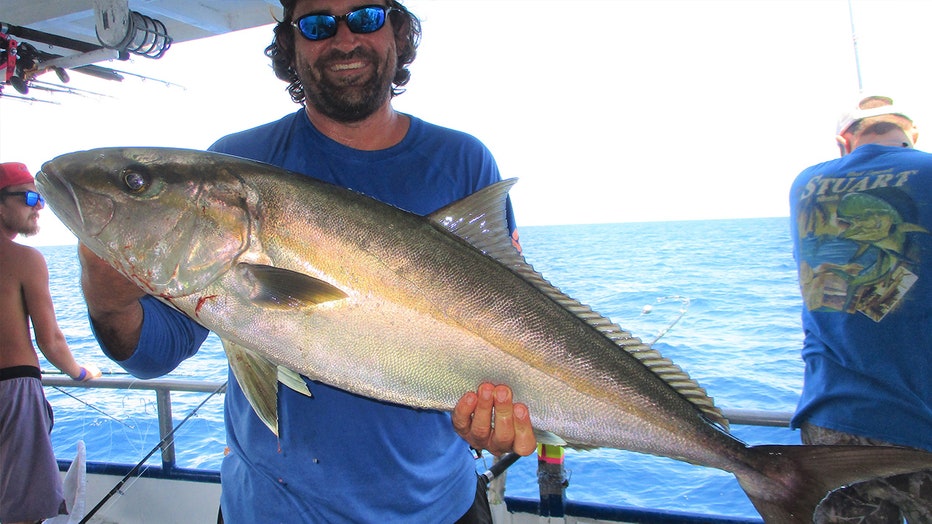
Amberjack (Credit: Hubbard's Marina)
Scamp grouper hunt is on right now as we have time to focus on these great eating fish. Our Flying HUB 2 private fishing charter yesterday landed 15 keepers for seven anglers with a great start to the hunt. We see these bigger scamp groupers right around 120 feet of water or more. The closer you get to around 200 feet, the bigger they get. We look forward to dialing in on these guys more through the fall until the gag bite picks up heavily for us with cooling waters.
Mangrove snapper action has been steady, and we typically see a good overall size of goozers this time of year as well. Typically, we find the mangroves feeding well on big ledges, peaks, rock piles, or any good structures offshore. They will typically be down towards the bottom but will come up in the water column as we fish a spot, or you can chum them up too.
We catch them best using the double snell rig 5-6ot hooks and around 40-50lb test and a chunk of threadfin or sardine. We will brine our baits on long duration trips to preserve the bait and get the outside more tough while the inside gets oilier and funkier for the mangroves. Hooking the bait can get trickier on a double snell rig so we highly recommend checking out the videos on our fishing tips and tricks page where we go over how to tie this rig, how to hook the bait, how to brine the bait and much more! Here’s the link to our fishing tips and tricks page.
Yellowtail snapper action has picked up lately too and we hope to stay on these guys. They typically love a small squid strip about 2 inches long and about a ¼ wide with no more than about a ¼ inch in height. We will use this style bait on around a 40lb porgy rig or high low rig and have great success on the yellowtail when they are ready to cooperate. Sometimes catching two at a time.
Plus, this is a great set up for plentiful big vermillion snapper and porgies while fishing deeper water too. However, you typically won’t see the scamp or the mangrove snapper bite this type of set up as they are more leader shy and smart. While you can get a chance for everything using the double snell rig on a fish finder rig set up, you sacrifice the second hook.
DON’T BE A FOOL, bring a venting tool & Descending device
Keep in mind the importance of dead discards and discard mortality when engaged in near shore or offshore fishing. How many do you know right now that are all for catching and releasing snook, redfish, and trout but will be the first in line to kill a mangrove snapper, gag grouper, or red snapper? But the attitude completely changes when discussing these offshore species?
Plus, the same person inshore that will hold their breath and wet their hands before handling a breeder snook will go offshore and then cull through 20 red snapper before keeping their two red snapper they deem large enough to fill their two-fish bag limits. Meanwhile, the other 18 they released will often end up suffering fatal damage if not properly descended or vented?
Please help us to spread the word on the importance of descending or venting your released fish. Descending devices are most easy to use and quick to pick up on their use. They are most effective for most anglers.
However, an expert and precise angler with proper training and tons of experience can use a venting tool properly with similar outcomes. A venting tool requires you to pierce the fish while most descending devices are much less invasive. While using a venting tool, it is imperative you pierce them in the exact right spot, and you do not go but a quarter-inch or less in the fish. Most venting tools require you to ‘choke up’ on the tool to prevent over-penetration into major organs.
When fishing deep water, especially in the hot summer months, please make sure to treat all fish intended to be released like that breeder snook inshore and minimize the time it takes you to get him from the bottom to the boat using heavier proper tackle, not an ultra-light spinning reel.
Then once onboard, minimize the time out of the water. Then use a proper de-hooking tool and then, for the love of God, use a descending device or venting tool PROPERLY to ensure that fish has a chance to live another day.
Three things will help ensure the survivability of those fish released offshore:
- Making sure they are brought up quickly and do not expend all their energy in the fight.
- Make sure they are unhooked smoothly, easily, and as quickly as possible.
- Finally, make sure they spend the least amount of time at the surface at negative pressures where barotrauma exponentially increases its effect with each passing second.
Also, keep in mind when the water is warm, there is less dissolved oxygen content and the chances of barotrauma increase even more while its effects can be even more deadly.
LINK: Here’s all the information and more on barotrauma and how to mitigate that fatal damage to your future offshore catch
**Note: I recommend the Salt Strong articles at the bottom of the page under ‘webpages.’ I helped them develop those personally.
STATE SURVEY to improve recreational data and access
It is imperative that you have your Gulf Reef Fish survey endorsement on your fishing license.
You should get one if you are a private recreational angler or diver fishing from a private boat anywhere in Florida who intends to harvest, attempt to harvest or possess one or more of the following reef fish species: mutton snapper, yellowtail snapper, hogfish, red snapper, vermilion snapper, gag grouper, red grouper, black grouper, greater amberjack, lesser amberjack, banded rudderfish, almaco jack, gray triggerfish, Gag grouper, Red grouper, Scamp grouper, Mangrove snapper, Lane snapper, Kingfish, Tuna, or Mahi mahi.
Here is all the information and more on that program and how you can sign up.
TERMS OF REFERENCE:
INSHORE – from the back bays out to the bridges and including right on the beaches
NEAR SHORE – From the beaches out to 20 miles, or up to 100ft of water
OFFSHORE – from 20 miles or 100ft and beyond
For more fishing reports, photos, videos and more check out Hubbard’s Marina on Facebook, Instagram, YouTube, or Snapchat. Just simply search "HubbardsMarina" and do not forget our family motto, "If you’re too busy to go fishing, you’re just too busy!

